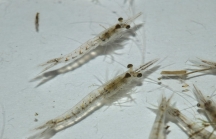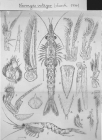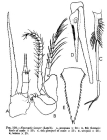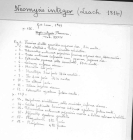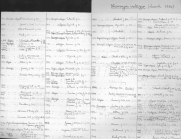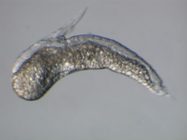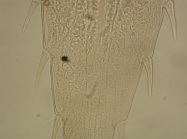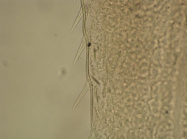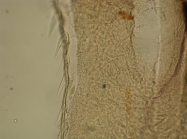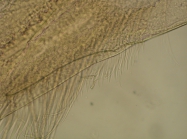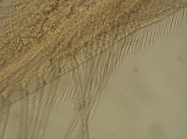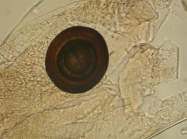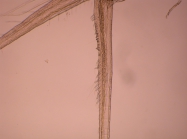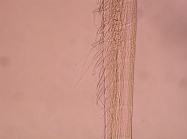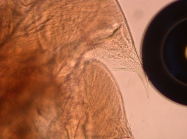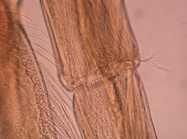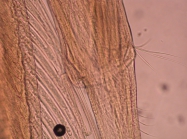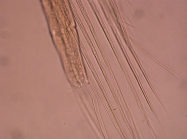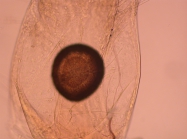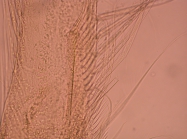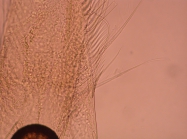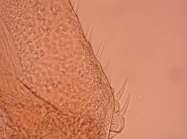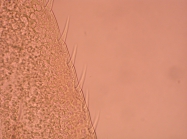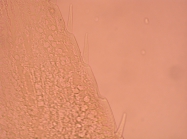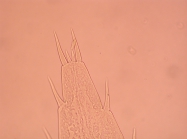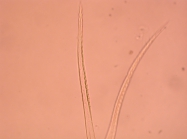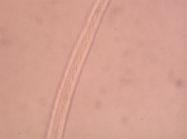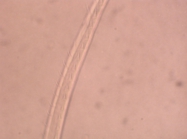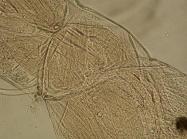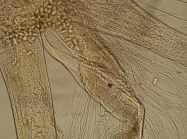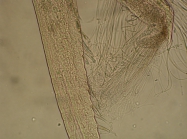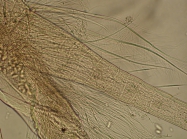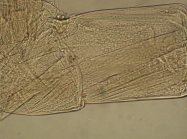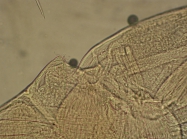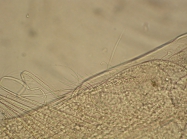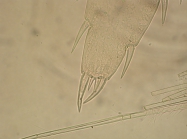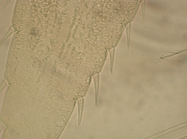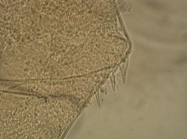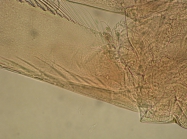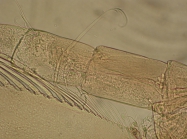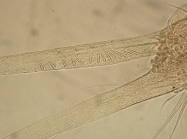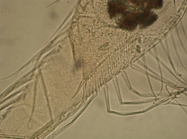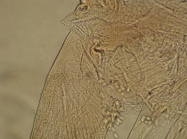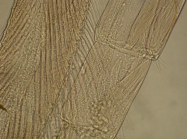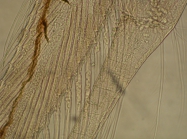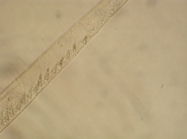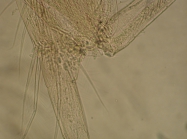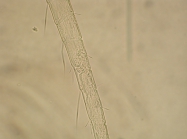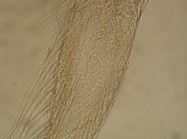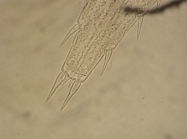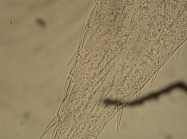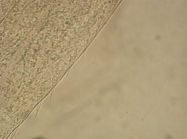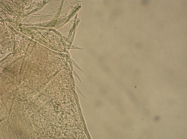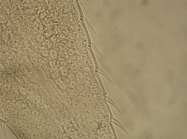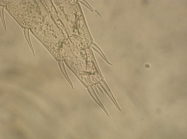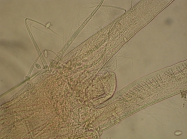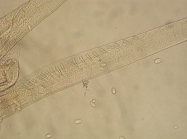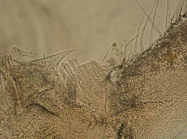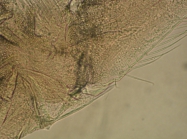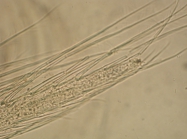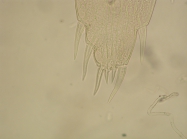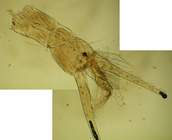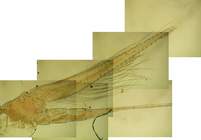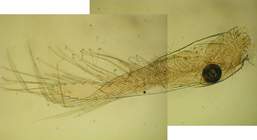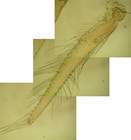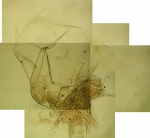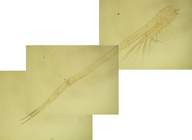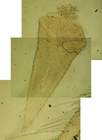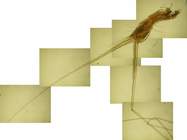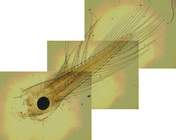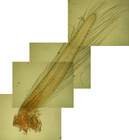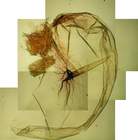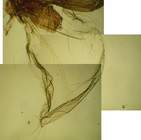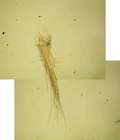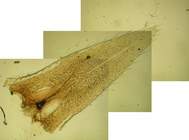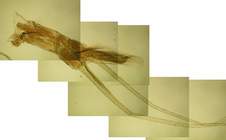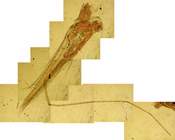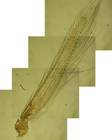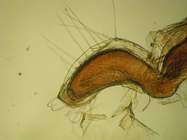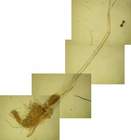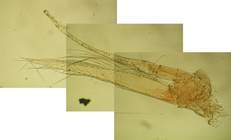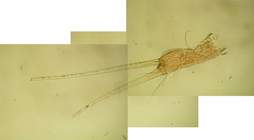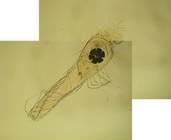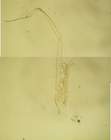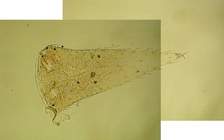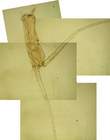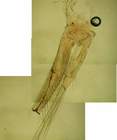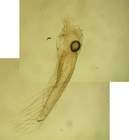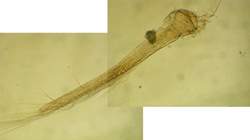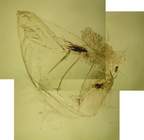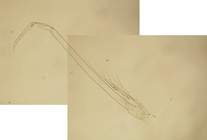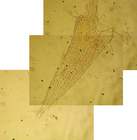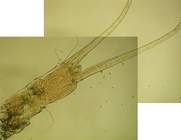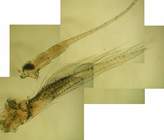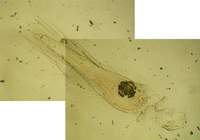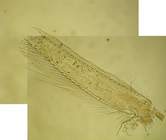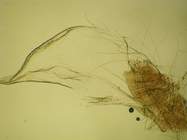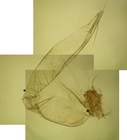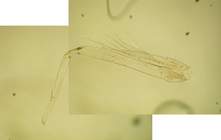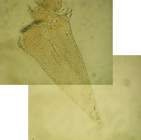
| Intro | | About | | Wiki | | Search traits | | Data explorer | | Literature | | Definitions | | Sources | | Webservices | | Statistics | | Feedback | | Editors | | Log in |
WoRMS taxon detailsNeomysis integer (Leach, 1814)
120136 (urn:lsid:marinespecies.org:taxname:120136)
accepted
Species
Mysis integer (Leach, 1814) · unaccepted > superseded combination
Mysis scoticus J.V. Thompson, 1828 · unaccepted > junior subjective synonym
Mysis vulgaris J.V. Thompson, 1828 · unaccepted > junior subjective synonym
Neomysis vulgaris (J.V. Thompson, 1828) · unaccepted (synonym)
Praunus integer Leach, 1814 · unaccepted > superseded combination (basionym)
marine, brackish, fresh,
(of Praunus integer Leach, 1814) Leach, W.E. (1813-1815). Crustaceology. <em>In: Brewster, D. (ed.), The Edinburgh Encyclopaedia. Balfour, Edinburgh, vol. 7(1): 383–384 [1813], 7(2): 385–437, 765–766 [1814], 9(1): pl. CCXXI [1815].</em> , available online at https://www.biodiversitylibrary.org/page/37187640 [details]
Mees, J.; Meland, K.; Väinölä, R. (Eds) (2012 onwards). World List of Lophogastrida, Stygiomysida and Mysida. Neomysis integer (Leach, 1814). Accessed through: World Register of Marine Species at: https://www.marinespecies.org/aphia.php?p=taxdetails&id=120136 on 2025-07-14
Date action by
Nomenclatureoriginal description
(of Mysis vulgaris J.V. Thompson, 1828) Thompson, J.V. (1829). On the Luminosity of the Ocean, with descriptions of some remarkable species of Luminous Animals (Pyrosoma pigmaea and Sapphirina indicator) and particularly of the four new genera, Nocticula, Cynthia, Lucifer and Podopsis, of the Shizopodae. <em>In: Thompson, J.V. (1828-1834). Zoological Researches, and illustrations; or, natural history of nondescript or imperfectly known animals, in a series of memoirs, illustrated by numerous figures.</em> pp. 37-61, plates V-VIII. (look up in IMIS) [details] original description (of Mysis vulgaris J.V. Thompson, 1828) Thompson, J.V. (1828). On the Genus Mysis, or Opossum Shrimp, in: Thompson, J.V. (1828-1834). Zoological Researches, and illustrations; or, natural history of nondescript or imperfectly known animals, in a series of memoirs, illustrated by numerous figures. pp. 13-31, plates III-IIII (look up in IMIS) [details] original description (of Praunus integer Leach, 1814) Leach, W.E. (1813-1815). Crustaceology. <em>In: Brewster, D. (ed.), The Edinburgh Encyclopaedia. Balfour, Edinburgh, vol. 7(1): 383–384 [1813], 7(2): 385–437, 765–766 [1814], 9(1): pl. CCXXI [1815].</em> , available online at https://www.biodiversitylibrary.org/page/37187640 [details] original description (of Mysis scoticus J.V. Thompson, 1828) Thompson, J.V. (1828). On the Genus Mysis, or Opossum Shrimp, in: Thompson, J.V. (1828-1834). Zoological Researches, and illustrations; or, natural history of nondescript or imperfectly known animals, in a series of memoirs, illustrated by numerous figures. pp. 13-31, plates III-IIII (look up in IMIS) [details] basis of record van der Land, J.; Brattegard, T. (2001). Mysidacea. <em>In: Costello, M.J. et al. (Ed.) (2001). European register of marine species: a check-list of the marine species in Europe and a bibliography of guides to their identification. Collection Patrimoines Naturels.</em> 50: pp. 293-295. (look up in IMIS) [details] new combination reference Tattersall, W. M. (1912). Clare Island survey. Pt. 41. Nebaliacea, Cumacea, Schizopoda and Stomatopoda. <em>Proc. Roy. Irish Acad.</em> 31: 1-10. [details] Taxonomytaxonomy source
Sars, G. O. (1879). Carcinologiske Bidrag til Norges fauna. I. <em>Monographi over de ved Norges Kyster forekommende Mysider. Pt. 3. Christiania, A.W. Brøgger.</em> pp. 1-131, 42 pls. (look up in IMIS) [details] taxonomy source Norman, A.M. 1892 . On British Mysidae, a family of Crustacea Schizopoda. - Ann. Mag. nat. Hist., ser. 6, 10: 143-166, 242-263, 2pls, available online at https://www.biodiversitylibrary.org/page/27658748 [details] taxonomy source Zimmer C. (1909): Die nordischen Schizopoden. K. Brandt & C. Apstein (eds.), Nordisches Plankton. Lipsius und Tischler, Kiel und Leipzig, 6: 1-178 [details] taxonomy source Czerniavsky, V. (1882). Monographia Mysidarum inprimis Imperii Rossici. Fasc. 1, 2. <em>Trudy Sankt-Peterburgskago Obshchestvo Estestvoispytatelei (Travaux de la Société des Naturalistes de St.-Pétersbourg).</em> 12: 1-170; 13: 1-85, 4 pls., available online at https://play.google.com/books/reader?id=BXlBAQAAMAAJ&pg=GBS.PP6 [details] taxonomy source Tattersall, W. M. (1951). A review of the Mysidacea of the United States National Museum. <em>Smithsonian Institution United States National Museum Bulletin.</em> 201: 1-292., available online at https://play.google.com/store/books/details?id=-vhMAAAAYAAJ&rdid=book--vhMAAAAYAAJ [details] Available for editors Ecologyecology source
Drake, P., A.M. Arias, F. Baldó, J.A. Cuesta, A. Rodríguez, A. Silva-García, I. Sobrino, D. García-González & C. Fernández-Delgado. (2002). Spatial and temporal variation of the nekton and hyperbenthos from a temperate European estuary with regulated freshwater inflow. <em>Estuaries.</em> 25(3):451-468., available online at https://doi.org/10.1007/bf02695987 [details] Available for editors ecology source Mees, J.; Abdulkerim, Z.; Hamerlynck, O. (1994). Life history, growth and production of Neomysis integer in the Westerschelde estuary (SW Netherlands). <em>Marine Ecology Progress Series.</em> 109, 43-57. [details] Available for editors ecology source S. D. Roast & J. Widdows & M. B. Jones (2002): Distribution and swimming behaviour of Neomysis integer (Peracarida: Mysidacea) in response to gradients of dissolved oxygen following exposure to cadmium at environmental concentrations MARINE ECOLOGY PROGRE [details] Available for editors Identification resourceidentification resource
Makings, P. (1977). A guide to British coastal Mysidacea. <em>Field Studies.</em> 4: 575-595. [details] Available for editors identification resource Tattersall, W.M.; Tattersall, O.S. (1951). The British Mysidacea. <em>Ray Society, London.</em> 1-460, figs. 1-118. (look up in IMIS) [details] Available for editors Othercontext source (Schelde)
Maris, T., O. Beauchard, S. Van Damme, E. Van den Bergh, S. Wijnhoven & P. Meire. (2013). Referentiematrices en Ecotoopoppervlaktes Annex bij de Evaluatiemethodiek Schelde-estuarium Studie naar “Ecotoopoppervlaktes en intactness index”. [Reference matrices and Ecotope areas Annex to the Evaluation methodology Scheldt estuary Study on “Ecotope areas and intactness index”. <em>Monitor Taskforce Publication Series, 2013-01. NIOZ: Yerseke.</em> 35 pp. (look up in IMIS) [details]
context source (BeRMS 2020) Aquatic environment and quality group; Flanders research institute for agriculture, fisheries and food (ILVO), Belgium; (2017): Subtidal hyperbenthos monitoring in function of a foreshore suppletion at the Belgian coast, period 2013-2016. [details] additional source Schlacher T.A.; Wooldridge, T.H. (1995): Tidal influence on distribution and behaviour of the estuarine opossum shrimp Gastrosaccus brevifissura Changes in Fluxes in Estuaries, ECSA22/ERF Symposium, K.R. Dyer and R.J. Orth (eds), Olsen & Olsen, Denmark: 3 [details] Available for editors additional source VLIZ. (2001). Book of abstracts Vliz Toung Scientists day. <em>VLIZ Special Publication 1.</em> [details] Available for editors additional source Price, W. (2001). World list of Mysidacea. [details] additional source Müller, H. G. (1993). World catalogue and bibliography of the recent Mysidacea. 238p. [details] Available for editors additional source Gordan, J. (1957). A bibliography of the order Mysidacea. <em>Bull. Am. Mus. Nat. Hist.</em> 112 (4): 281-393. [details] Available for editors additional source Holmquist, C. (1972). Mysidacea. <em>Binnengewässer.</em> 26: 247-256. [details] additional source Hough, A. R.; Naylor, E. (1992). Distribution and position maintenance behaviour of the estuarine mysid Neomysis integer. <em>J. mar. biol. Ass. U.K.</em> 72: 869-876. [details] additional source Mauchline, J. (1980). The biology of mysids and euphausiids. <em>In: J.H.S. Blaxter, F.S. Russell & M. Young (eds.), Advances in Marine Biology.</em> 18: 1-681 Academic Press, London). [details] Available for editors additional source Tattersall, W.M.; Tattersall, O.S. (1951). The British Mysidacea. <em>Ray Society, London.</em> 1-460, figs. 1-118. (look up in IMIS) [details] Available for editors additional source Muller, Y. (2004). Faune et flore du littoral du Nord, du Pas-de-Calais et de la Belgique: inventaire. [Coastal fauna and flora of the Nord, Pas-de-Calais and Belgium: inventory]. <em>Commission Régionale de Biologie Région Nord Pas-de-Calais: France.</em> 307 pp., available online at http://www.vliz.be/imisdocs/publications/145561.pdf [details] additional source Mees, J.; Cattrijsse, A.; Hamerlynck, O. (1993). Distribution and abundance of shallow-water hyperbenthic mysids (Crustacea, Mysidacea) and euphausiids (Crustacea, Euphausiacea) in the Voordelta and the Westerschelde, southwest Netherlands. <em>Cahiers de Biologie Marine.</em> 34: 165-186. (look up in IMIS) [details] Available for editors additional source Fockedey, N.; Mees, J. (1999). Feeding of the hyperbenthic mysid Neomysis integer in the maximum turbidity zone of the Elbe, Westerschelde and Gironde estuaries. <em>Journal of Marine Systems.</em> 22, 207-228. [details] Available for editors additional source Zekeria Abdulkerim (1992): Life history and production of Neomysis integer in teh brackish part of the Westerschelde [details] additional source Kathman, R.D., W.C. Austin, J.C. Saltman & J.D. Fulton (1986): Identification manual of the Mysidacea and Euphausiacea of the northeast Pacific. - Can. Spec. Publ. Fish. Aquat.Sci., 93: 1-411 [details] Available for editors additional source Zimmer, C. (1904). Die Arktischen Schizopoden. <em>In "Fauna Arctica" (F. Römer & F. Schaudinn, eds.). Gustav Fischer, Jena.</em> 3: 415-492. [details] additional source Schlacher, T. A.; Wittmann, K. J.; Ariani, A. P. (1992). Comparative morphology and actuopalaeontology of mysid statoliths (Crustacea, Mysidacea). <em>Zoomorphology.</em> 112: 67-79. [details] Available for editors additional source Lindstrom, M. (2000). Eye function of Mysidacea (Crustacea) in the northern Baltic Sea. <em>Journal of Experimental Marine Biology and Ecology.</em> 246: 85–101. [details] Available for editors additional source Elofsson, R. (1966). The nauplius eye and frontal organs of the non-Malacostraca (Crustacea). <em>Sarsia.</em> 25(1):1-128, figs. 1-71. (25-viii-1966)., available online at https://doi.org/10.1080/00364827.1966.10409568 [details] additional source Holmquist, C. (1981). The genus <em>Acanthomysis</em> Czerniavsky, 1882 (Crustacea, Mysidacea). <em>Zoologische Jahrbücher. Abteilung für Systematik, Ökologie und Geographie der Tiere.</em> 108(3): 386-415. [details] Available for editors additional source Wittmann K.J. (1984). Ecophysiology of marsupial development and reproduction in Mysidacea (Crustacea). Oceanography and Marine Biology: an Annual Review, 22, 393-428. [details] Available for editors additional source San Vicente C. & Sorbe J-C. (1990). Biologia del Misidaceo suprabentonico Schistomysis kervillei (Sars, 1885) en la plataforma continental Aquitana (Suroeste de Francia). Bentos, 6, 245-267. [details] Available for editors additional source Mees, J.; Dewicke, A.; Hamerlynck, O. (1993). Seasonal Composition and Spatial Distribution of Hyperbenthic Communities Along Estuarine Gradients in the Westerschelde. <em>Netherlands Journal of Aquatic Ecology.</em> 27, 2-4, 359-376. (look up in IMIS) [details] Available for editors additional source Beneden, P.J. van. (1861). Recherches sur les Crustacés du littoral de Belgique. [Research on Crustaceans of the Belgian coast.]. <em>Memoires de l'Academie royale des sciences de Belgique.</em> 33: 1-180, pls. 1-31., available online at https://www.biodiversitylibrary.org/bibliography/119687#/summary [details] additional source Dewicke, A., V. Rottiers, J. Mees & M. Vincx. (2002). Evidence for an enriched hyperbenthic fauna in the Frisian front (North Sea). <em>Journal of Sea Research.</em> 47(2): 121-139. (look up in IMIS), available online at https://doi.org/10.1016/s1385-1101(02)00106-5 [details] Available for editors additional source Johnson, M.P. (2001). Metapopulation dynamics of Tigriopus brevicornis (Harpacticoida) in intertidal rock pools. Marine Ecology Progress Series 211:215-224. [details] Available for editors additional source Raymont, J.E.G. & R.J. Conover. (1961). Further investigations on the carbohydrate content of marine zooplankton. Limnology and Oceanography 6(2):154-164, tabs. 1-6. (iv-1964) [details] Available for editors additional source Wooldridge, T. H.; Mees, J. (2011 onwards). World List of the Mysidacea. [details] additional source Bacescu, M. (1954). Mysidacea. <em>In: Fauna Republicii Populare Romîne, Crustacea, IV (3). Academia Republicii Populare Romîne, Bucuresti.</em> Pages 1-126. [details] Available for editors additional source Genovese, S. 1956. Su due Misidacei dei laghi di Ganzirri e di Faro (Messina).-- Bollettino di Zoologia 23 (2): 177-197. [details] Available for editors additional source Hostens, K.; Mees, J. (1999). The mysid-feeding guild of demersal fishes in the brackish zone of the Westerschelde estuary. <em>Journal of Fish Biology.</em> 55(4): 704-719. (look up in IMIS), available online at https://doi.org/10.1006/jfbi.1999.1026 [details] additional source Moore, J.W., & I.A. Moore. 1976. The basis of food selection in some estuarine fishes. Eels, Anguilla anguilla (L.), whiting, Merlangius merlangus (L.), sprat, Sprattus sprattus (L.) and stickleback, Gasterosteus aculeatus L.-- Journal of Fish Biology 9: 375-390. [details] Available for editors additional source Morris, R.J. 1971. Seasonal and environmental effects on the lipid composition of Neomysis integer.-- Journal of the Marine Biological Association of the United Kingdom 51: 21-31. [details] Available for editors additional source Nyman, L., & L. Westin. 1969. A contribution to the methods of classification for some Mysidae and Gammarus species in the Baltic.-- Report (Sotvattenslaboratoriet (Sweden)) = Report - Institute of Freshwater Research (Drottningholm) 49: 157-163. [details] Available for editors additional source Parker, M. 1979. Neomysis integer (Leach) (Crustacea: Mysidacea): records and distribution in Ireland.-- The Irish Naturalists' Journal 19 (10): 339-342. [details] Available for editors additional source Parker, M., & B. West. 1979. The natural history of Neomysis integer (Leach) in Lough Furnace, Co. Mayo, a brackish lough in the west of Ireland.-- Estuarine and Coastal Marine Science 8: 157-167. [details] Available for editors additional source Petriconi, V. 1968. Zur Bildung des präantennalen Mesoderms bei Neomysis integer im Hinblick auf die Kopfsegmentierung.-- Zoologische Jahrbücher. Abteilung für Anatomie und Ontogenie der Tiere 85: 579-596. [details] Available for editors additional source Seguin, G. (1968). Contribution à l´etude biochimique de Praunus flexuosus Müller (Mysidacé). <em>Pelagos : Bulletin de l´Institut Océanographique d´Alger.</em> 9: 21-28. [details] Available for editors additional source Srinivasagam, R.T., J.E.G. Raymont, C.F. Moodie, & J.K.B. Raymont. 1971. Biochemical studies on marine zooplankton. X. The amino acid composition of Euphausia superba, Meganyctiphanes norvegica and Neomysis integer.-- Journal of the Marine Biological Society of the United Kingdom 51: 917-925. [details] Available for editors additional source Tundisi, J., & S. Krishnaswamy. 1967. Total phosphorus content of Neomysis integer.-- Boletim do Instituto Oceanográfico 16: 99-100. [details] Available for editors additional source Verslycke, T.; Fockedey, N.; McKenney, C. L.; Roast, S. D.; Jones, M. B.; Mees, J.; Janssen, C. R. (2004). Mysids as potential test organisms for the evaluation of environmental endocrine disruption: a review. <em>Environmental Toxicology and Chemistry.</em> 23(5), 1219-1234. [details] additional source Vlasblom, A.G., & J.H.B.W. Elgershuizen. 1977. Survival and oxygen consumption of Praunus flexuosus and Neomysis integer, and embryonic development of the latter species, in different temperature and chlorinity combinations.-- Netherlands Journal of Sea Research 11 (3/4): 305-315. [details] Available for editors additional source Williams, A.B., T.E. Bowman, & D.M. Damkaer. 1974. Distribution, variation, and supplemental description of the opossum shrimp, Neomysis americana (Crustacea: Mysidacea).-- Fishery Bulletin 72: 835-842. [details] Available for editors additional source Dewicke, A., A. Cattrijsse, J. Mees & M. Vincx. (2003). Spatial patterns of the hyperbenthos of subtidal sandbanks in the southern North Sea. <em>Journal of Sea Research.</em> 49: 27-45. (look up in IMIS) [details] Available for editors additional source Hough, A. R.; Bansister, N. J.; Naylor, E. (1992). Intersexuality in the mysid Neomysis integer. <em>J. Zool., Lond.</em> 226, 585-588. [details] Available for editors additional source Astthorson, O. S.; Ralph, R. (1984). Growth and moulting of Neomysis integer (Crustacea: Mysidacea). <em>Mar. Biol.</em> 79 (1): 55-61. [details] Available for editors additional source Astthorson, O. S. (1980). The life history and ecological energetics of Neomysis integer (Leach) (Crustacea, Mysidacea). <em>Doct. Diss., Univ. Aberdeen.</em> 245pp. [details] Available for editors additional source Astthorson, O. S. (1984). The distribution and biology of mysids in Icelandic subarctic waters as demonstrated by analysis of cod stomach contents. <em>Sarsia.</em> 69 (2): 107-116. [details] Available for editors additional source Bacescu, M. (1941). Les Mysidacés des eaux méditerranéennes de la France (spécialement de Banyuls) et des eaux de Monaco. <em>Bull. Inst. Océanogr.</em> 795: 1-46. (look up in IMIS) [details] Available for editors additional source BEAUDOUIN, J. (1979). Euphausicés, mysidacés, larves de décapodes du Golfe de Gascogne (plateau continentale) en 1971 et 1972. - Rev. Trav. Inst. Pêch. marit., 43 (4): 367-389 [details] Available for editors additional source Bergström, U.; Englund, G. (2004). Spatial scale, heterogeneity and functional responses. <em>Journal of Animal Ecology.</em> 73 : 487-493. [details] Available for editors additional source Beyst, B.; Cattrijsse, A.; Mees, J. (1999). Feeding ecology of juvenile flatfishes of the surf zone of a sandy beach. <em>Journal of Fish Biology.</em> 55: 1171-1186. [details] Available for editors additional source BOSLEY KL, WITTING DA, CHAMBERS RC, WAINRIGHT SC (2002). Estimating turnover rates of carbon and nitrogen in recently metamorphosed winter flounder Pseudopleuronectes americanus with stable isotopes MEPS 236:233-240 : [details] Available for editors additional source BRUWIERE STIJN (2004). In vitro embryogenese van Neomysis integer (Crustacea: Mysidacea) als potentiële indicator voor endocriene verstoring B.Sc. Thesis, Universiteit Gent, België : 95 pp. [details] Available for editors additional source CHARLES, L., MCKENNEY, JR. (1994). Resistance patterns to salinity and temperature in an estuarine mysid (Mysidopsis bahia) in relation to its life cycle Comp. Biochem. Physiol. Vol. 109a, 199-208 [details] Available for editors additional source Almeida Prado-Por, M.S. de. (1973). Distribution of Mysidacea (Crustacea) in the Cananeia region. -. <em>Bolm. Fac. Fil. S. Paulo (Zool. & Biol. mar.), N.S. 30: 395-417.</em> [details] Available for editors additional source DESROY N, DENIS L (2004). Influence of spring phytodetritus sedimentation on intertidal macrozoobenthos in the eastern English Channel Mar Ecol Prog Ser 270 : 41-53 [details] Available for editors additional source DE WASCH, K.; POELMANS, S.; VERSLYCKE, T.; JANSSEN, C.; VAN HOOF, N.; DE BRABANDER, H.F. (2002). Alternative to vertebrate animals experiments in the study of metabolism of illegal growth promotors and veterinary drugs Analytica Chimica Acta 473 : 59-69 [details] Available for editors additional source Speirs, D.; Lawrie, S.; Raffaelli, D.; Gurney, W.; Emes, C. (2002). Why do shallow-water predators migrate?. <em>Journal of Experimental Marine Biology and Ecology.</em> 280(1-2): 13-31., available online at https://doi.org/10.1016/s0022-0981(02)00363-5 [details] Available for editors additional source E. Garnacho, E.; Peck, L. S.; Tyler, P. A. (2001). Effects of copper exposure on the metabolism of the mysid Praunus flexuosus. <em>Journal of Experimental Marine Biology and Ecology.</em> 265: 181-201. [details] Available for editors additional source Gorokhova, E. (2002). Moult cycle and its chronology in Mysis mixta and Neomysis integer (Crustacea, Mysidacea): implications for growth assessment. <em>Journal of Experimental Marine Biology and Ecology.</em> 278(2): 179-194., available online at https://doi.org/10.1016/s0022-0981(02)00333-7 [details] Available for editors additional source Gorokhova, E.; Hansson, S. (2000). Elemental composition of Mysis mixta (Crustacea, Mysidacea) and energy costs of reproduction and embryogenesis under laboratory conditions. <em>Journal of Experimental Marine Biology and Ecology.</em> 246(1): 103-123., available online at https://doi.org/10.1016/s0022-0981(99)00173-2 [details] Available for editors additional source Engström, J.; Viherluoto, M.; Viitasalo, M. (2001). Effects of toxic and non-toxic cyanobacteria on grazing, zooplanktivory and survival of the mysid shrimp Mysis mixta. <em>Journal of Experimental Marine Biology and Ecology.</em> 257(2): 269-280., available online at https://doi.org/10.1016/s0022-0981(00)00339-7 [details] Available for editors additional source FARRAN G. P. (1912). Clare Island Survey: Decapoda Proceedings of the royal Irish Academy 40: 1-8 [details] additional source FORD, R.B. & PATERSON, D.M. (2001). Behaviour of Corophium volutator in still versus flowing water. Estuarine, coastal and shelf science 52 : 357-362 [details] Available for editors additional source GAYE-SIESSEGER J, FOCKEN U, MUETZLE S, ABEL H, BECKER K (2004). Feeding level and individual metabolic rate affect delta12C and delta15N values in carp: implications for food web studies Oecologia 138 : 175-183 [details] Available for editors additional source GOROKHOVA E (1998). Exploring and modelling the growth dynamics of Mysis mixta Ecol Model 110:45-54 : [details] Available for editors additional source GOROKHOVA, E.; HANSSON, S. (1999). An experimental study on the variations in stable carbon and nitrogen isotopes fractionation during growth of Mysis mixta and Neomysis integer Can. J. Fish. Aquat. Sci., 56: 2203-2210 : [details] Available for editors additional source Hamerlynck, O.; Mees, J.; Craeymeersch, J. A.; Soetaert, K.; Hostens, K.; Cattrijsse, A.; Van Damme, P. A. (1993). The Westerschelde estuary: two food webs and a nutrient rich desert. <em>Proc. Prog. Belg. Ocean Res.</em> 217-234. [details] Available for editors additional source Thetmeyer, H. (1997). Diel rhythms of swimming activity and oxygen consumption in Gobiusculus flavescens (Fabricius) and Pomatoschistus minutus (Pallas) (Teleostei: Gobiidae). <em>Journal of Experimental Marine Biology and Ecology.</em> 218: 187-198. [details] Available for editors additional source HERMAN, J. (1969). Aasgarnalen - (Mysidacea) Tabellenserie van de strandwerkgemaanschap, koninklijke Nederlandse Natuurhistorische vereniging, Nederlandse jeugdbond voor natuurstudie & de Christelijke jeugdbond van Natuurvrienden; 23 [details] Available for editors additional source Hampel, H.; Cattrijsse, A.; Vincx, M. (2003). Habitat value of a developing estuarine brackish marsh for fish and macrocrustaceans. <em>ICES Journal of Marine Science.</em> 60(2): 278-289. (look up in IMIS), available online at https://doi.org/10.1016/s1054-3139(03)00013-4 [details] Available for editors additional source Holmquist, C. (1957). On aberrant specimens of <i>Praunus flexuosus</i> and some other opossum shrimps. <em>Acta borealia.</em> Ser A. 13: 1-29. [details] Available for editors additional source Navarro, J.; Labarta, U.; Fernández-Reiriz, M.; Velasco, A. (2003). Feeding behavior and differential absorption of biochemical components by the infaunal bivalve Mulinia edulis and the epibenthic Mytilus chilensis in response to changes in food regimes. <em>Journal of Experimental Marine Biology and Ecology.</em> 287(1): 13-35., available online at https://doi.org/10.1016/s0022-0981(02)00501-4 [details] Available for editors additional source JOHANNSSON, O. & LEGGETT M. & RUDSTAM, L. & SERVOS, M. & MOHAMMADIAN, M. & GAL, G. & DERMOTT R. &HESSLEIN, R. (2001). Diet of Mysis relicta in Lake Ontario as revealed by stable isotope and gut analysis Cann. J. Fish. Aquat. Sci. 58: 1975-1986 [details] Available for editors additional source KELLEHER, B.; VAN DER VELDE, G.; WITTMANN, K. FAASSE M.; BIJ DE VAATE, A. (1999). Current status of the freshwater Mysidae in the Netherlands, with records of Limnomysis benedeni Czerniavsky, 1882, a pontocaspian species in dutch rhine branches Bulletin zoölogische museum, Universiteit Amsterdam 16(13):89-93 [details] Available for editors additional source Kim, H.Y.; Chin, P. (1991). Growth and Energy budget of Neomysis awatschensis. <em>Korean J. Zool.</em> 34: 594-609. [details] Available for editors additional source KöHN, J.; JONES, M.B. (1991). Taxonomy, Biology and Ecology of (Baltic) Mysidacea International Expert Conference, Hiddensee, Germany [details] Available for editors additional source KÜHL, H. (1964). Die Mysiden der Elbmündung. - Abh. Verh. naturw. Ver. Hamburg, N.F. 8: 167-178 [details] Available for editors additional source LABAT, R.Contribution à l'étude de l'écologie, l'éthologie et la sexualité chez quelques Mysidacés Faculté des sciences de l'université de toulouse [details] Available for editors additional source Lagardère, J.-P.; Nouvel, H. (1980). Les mysidacés du talus continental du golfe de Gascogne. 2. Familles des Lophogastridae, Eucopiidae et Mysidae (tribu des Erythropini exceptée). <em>Bulletin du Museum National d'Histoire Naturelle, Paris.</em> 2(2): 375-412; 2 (3): 845-887. [details] Available for editors additional source LAWRENCE, A.J.; POULTER, C. (2001). Impact of copper, pentachlorophenol and benzo[a]pyrene on the swimming efficiency and embryogenesis of the amphipod Chaetogammarus marinus Mar. Ecol. Prog. Ser. 223 : 213-223 [details] Available for editors additional source LE FèVRE-LEHOëRFF G. & MONOD M. (1972). Distribution et variations saisonnières du plancton en "rivièere de morlaix" C.R. Acad. Sc. Paris 275: 1681-1684 [details] Available for editors additional source Lock, K.; Mees, J. (1999). The winter Hyperbenthos of the Ria Formosa - a lagoon in southern Portugal - and adjacent waters. <em>Cah. Biol. Mar.</em> 40: 47-56. [details] Available for editors additional source Collier, L. M.; Pinn, E. H. (1998). An assessment of the acute impact of the sea lice treatment ivermectin on a benthic community. <em>Journal of Experimental Marine Biology and Ecology.</em> 230: 131-147. [details] Available for editors additional source Ma, C.; Hong, S.; Ohh, C.-W.; Hartnoll, R. (2001). Post-embryonic growth and survival of archaeomysis kobukoi Ii, 1964 (Mysidacea) reares in the laboratory. <em>Crustaceana.</em> 74(4): 347-362. [details] Available for editors additional source Maes, J., L. de Brabandere, F. Ollevier & J. Mees. (2003). The diet and consumption of dominant fish species in the upper Scheldt estuary, Belgium. <em>Journal of the Marine Biological Association of the United Kingdom 83(3): 603-612.</em> 83(3): 603-612. [details] Available for editors additional source MARSHALL, S.; ELLIOTT, M. (1997). A comparison of univariate and multivariate numerical and grafical techniques for determining inter- and intraspecific feeding relationships in estuarine fish Journal of Fish Biology 51 3: 526-545 [details] Available for editors additional source MARTIN LARSVIK, (1999). SVENSKA NAMN PÅ MARINA EVERTEBRATTAXA Tjärnö marinbiologiska laboratorium [details] Available for editors additional source MAUCHLINE, J. (1971). Rare species of Mysidacea (Crustacea) from the west coast of Scotland. - J. mar. biol. Ass. U.K., 51: 799-808 [details] Available for editors additional source MAUCHLINE, J. (1971). Seasonal occurence of mysids (Crustacea) and evidence of social behaviour. - J. mar. biol. Ass. U.K., 51: 809-825. [biology, ecology [details] Available for editors additional source MAUCHLINE, J. (1971). The biology of Neomysis integer (Crustacea, Mysidacea). - J. mar. biol. Ass. U.K., 51: 347-354 [details] Available for editors additional source MAUCHLINE, J. (1971). The biology of Praunus flexuosus and P. neglectus (Crustacea, Mysidacea). - J. mar. biol. Ass. U.K., 51: 641-652 [details] Available for editors additional source MAUCHLINE, J. (1971). The fauna of the clyde sea area. Crustacea: Mysidacea, with a key to the species. In H.T. Powell (ed.), The Fauna of the Clyde Sea Area. Scott. mar. biol. Ass., Oban: 26pp [details] Available for editors additional source MAUCHLINE, J. (1973). Intermoult growth of species of Mysidacea (Crustacea). - J. mar. biol. Ass. U.K., 53: 569-572. [development [details] Available for editors additional source MAUCHLINE, J. (1973). The broods of British Mysidacea (Crustacea). - J. mar. biol. Ass. U.K., 53: 801-817. [development [details] Available for editors additional source MAYRAT, A. (1956). Oeil, centres optiques et glandes endocrines de Praunus flexuosus (O.F. Müller). - Arch. Zool. exp. gén., 93: 319-366. [anatomy, optical sense [details] Available for editors additional source MCLUSKY, D.S. & V.E.J. HEARD (1971). Some affects of salinity on the mysid Praunus flexuosus. - J. Mar. Biol. Ass. U.K., 51: 709-715 [details] additional source MEES J., FOCKEDEY N., DEWICKE A., JANSSEN C., SORBE JC (1995). ABERRANT INDIVIDUALS OF NEOMYSIS INTEGER AND OTHER MYSIDACEA: INTERSEXUALITY AND VARIABLE TELSON MORPHOLOGY NETHERLANDS JOURNAL OF AQUATIC ECOLOGY 29(2) 161-166 [details] Available for editors additional source Mees, J.; Fockedey, N.; Hamerlynck, O. (1995). Comparative study of the hyperbenthos of three European estuaries. <em>Hydrobiologia.</em> 311: 153-174. [details] Available for editors additional source Mees, J.; Hamerlynck, O. (1992). Spatial community structure of the winter hyperbenthos of the Schelde estuary, the netherlands and the adjacent coastal waters. <em>Netherlands Journal of Sea Research.</em> 29(4): 357-370. [details] Available for editors additional source Mees, J.; Jones, M. B. (1997). The hyperbenthos. <em>Oceanography and marine Biology: an annual review.</em> 35: 221-255. (look up in IMIS) [details] Available for editors additional source Nouvel, H. (1973). Observations sur les mysidacés et quelques cumaces littoraux de la côte française du Golfe de Gascogne au sud de l'embouchure de la Gironde. <em>Bull. Centre d'Etud. Rech.Sci., Biarritz.</em> 9(2): 127-140. [details] Available for editors additional source ROAST, S.D.; THOMPSON, R.S.; DONKIN, P.; WIDDOWS, J.; JONES, M.B. (1999). Toxicity of the organophosphate pesticides chlorpyrifos and dimethoate to Neomysis integer (Crustacea: Mysidacea) Wat. Res. 33 : 319-326 [details] Available for editors additional source ROAST, S.D.; WIDDOWS, J.; JONES, M.B. (1998). The position maintenance behaviour of Neomysis integer (Peracarida: Mysidacea) in response to current velocity, substratum and salinity J. Exp. Mar. Biol. Ecol. 220 : 25-45 [details] Available for editors additional source ROAST, S.D.; WIDDOWS, J.; JONES, M.B. (2000). Egestion rates of the estuarine mysid Neomysis integer (Peracarida : Mysidacea) in relation to a variable environment J. Exp. Mar. Biol. Ecol. 245 : 69-81 [details] Available for editors additional source ROAST, S.D.; WIDDOWS, J.; JONES, M.B. (2000). Mysids and trace metals: disruption of swimming as a behavioural indicator of environmental contamination Marine Environmental Research 50 : 107-112 [details] Available for editors additional source ROAST, S.D.; WIDDOWS, J.; JONES, M.B. (2001). Impairment off mysid (Neomysis integer) swimming ability: an environmental realistic assessment of the impact of cadmium exposure Aquatic Toxicology 52 : 217-227 [details] Available for editors additional source ROAST, S.D.; WIDDOWS, J.; JONES, M.B. (2002). Behavioural responses of estuarine mysids to hypoxia and disruption by cadmium Marine Environmental Research 54 : 319-232 [details] Available for editors additional source ROAST, S.D.; WIDDOWS, J.; JONES, M.B. (2002). Distribution and swimming behaviour of Neomysis integer (Peracarida: Mysidacea) in response to gradients of dissolved oxygen following exposure to cadmium at environmental concentrations Mar. Ecol. Prog. Ser. 237 : 185-194 [details] Available for editors additional source SANTA, N. & M. BACESCU (1942). Reccherches sur la vitamine C chez quelques crustacés marins. - Bull. Sec. Sci. Acad. Roum., 24: 438-443. [vitamines [details] Available for editors additional source SÄRKKÄ, J. (1969). The bottom fauna of the mouth of the river Kokemäenjoki, southwestern Finland. - Ann. zool. Fenn., 6: 275-288. [Praunus inermis] [details] Available for editors additional source SCHWAMBORN R, EKAU W, VOSS M, SAINT-PAUL U (2002). How important are mangroves as a carbon source for decapod crustacean larvae in a tropical estuary? MEPS 229:195-205 : [details] Available for editors additional source SERGEVA, ZH. & CKHOMELISZE, O. (1968). Reconstruction of the fauna of little lakes in Georgia Gidrobiol. Zh. Ukrain, S.S.R. 4(4): 41-46 [details] Available for editors additional source Lawrie, S. M.; Speirs, D. C.; Raffaelli, D. G.; Gurney, W. S. C.; Paterson, D. M.; Ford, R. (1999). The swimming behaviour and distribution of <i>Neomysis integer</i> in relation to tidal flow. <em>Journal of Experimental Marine Biology and Ecology.</em> 242: 95-106. [details] Available for editors additional source SORBE, J.C. (1991). Biologia del Misidàceo suprabentónico Schistomysis ornata (Sars, 1864) en la plataforma continental aquitana. - Actas V Simp. Ibér. Estud. Bentos Mar., 1: 273-298. [biology [details] Available for editors additional source Sudo, H. (2003). Effect of temperature on growth, sexual maturity and reproduction of <i>Acanthomysis robusta</i> (Crustacea: Mysidacea) reared in the laboratory. <em>Marine Biology.</em> 143(6): 1095 - 1107. [details] Available for editors additional source Meziane, T.; Sanabe, M.; Tsuchiya, M. (2002). Role of fiddler crabs of a subtropical intertidal flat on the fate of sedimentary fatty acids. <em>Journal of Experimental Marine Biology and Ecology.</em> 270(2): 191-201., available online at https://doi.org/10.1016/s0022-0981(02)00019-9 [details] Available for editors additional source Verslycke, T.; Ghekiere, A.; Janssen, C. R. (2004). Seasonal and spatial patterns in cellular energy allocation in the estuarine mysid Neomysis integer (Crustacea: Mysidacea) of the Scheldt estuary (The Netherlands). <em>Journal of Experimental Marine Biology and Ecology.</em> 306 2: 245-267. [details] Available for editors additional source Vainola, R.; Vainio, J. K. (1998). Distributions, life cycles and hybridization of two Mysis relicta group species (Crustacea: Mysida) in the northern Baltic Sea and lake Baven. <em>Hydrobiologia.</em> 368: 137-148. [details] Available for editors additional source VAN DALFSEN, J.A. & ESSINK, K. (1997). Risk analysis of coastal nourishment techniques (RIACON). National Evaluation Report (The Netherlands). National Institute for Coastal and Marine Management (RIKZ), Report RIKZ_97.022, Haren, The Netherlands. 98 pp. : [details] Available for editors additional source VAN LONDERSEELE, I. & VANLOO, V. & POSSé, B. (2002). Op punt stellen referentiecollectie Mysida met koppeling aan digitale collectie Maandwerk [details] Available for editors additional source VEMEERSCH MARIEKE (2004). Biologische kennis als alternatief voor chemische bestrijding van de Brakwatermossel (Mytilopsis leucophaeata) Licentiaatsthesis UGent Faculteit Wetenschappen Academiejaar 2003-2004 : 1-67 + bijlagen [details] Available for editors additional source VERSCHILLENDE AUTEURS (2001). De Schelde: een rivier met vele gezichten De Levende Natuur [details] Available for editors additional source VERSLYCKE, T.; DE WASCH, K.; DE BRABANDER H.F.; JANSSEN, C.R. (2002). Testosterone metabolism in the estuarine mysid Neomysis integer (Crustacea, Mysidacea): identification of testosterone metabolites and endogenous vertebrate-type steroids General and Comparative Endocrinology 126 : 190-199 [details] Available for editors additional source VERSLYCKE, T.; JANSSEN, C.R. (2002). Effects of a changing abiotic environment on the energy metabolim in the estuarine mysid shrimp Neomysis integer (Crustacea, Mysidacea) J. Exp. Mar. Biol. Ecol. 279 : 61-72 [details] Available for editors additional source VERSLYCKE, T.; POELMANS, S.; DE WASH, K.; DE BRABANDER, H.F.; JANSSEN, C.R. (2004). Testosterone and energy metabolism in the estuarine mysid Neomysis integer (Crustacea: Mysidacea) following exposure to endocrine disruptors Environmental Toxicology and Chemistry 23 5: 1289-1296 [details] Available for editors additional source Tattersall, W. M. (1938). The seasonal occurence of mysids off Plymouth. <em>J. Mar. Biol. ASS: U.K.</em> 23: 43-56. [details] Available for editors additional source Tattersall, W. M. (1951). A review of the Mysidacea of the United States National Museum. <em>Smithsonian Institution United States National Museum Bulletin.</em> 201: 1-292., available online at https://play.google.com/store/books/details?id=-vhMAAAAYAAJ&rdid=book--vhMAAAAYAAJ [details] Available for editors additional source VERSLYCKE, T.; VANGHELUWE, M.; HEIJERICK,D.; DE SCHAMPHELAERE, K.; VAN SPRANG, P.; JANSSEN, C.R. (2003). The toxicity of metal mixtures to the estuarine mysid Neomysis integer (Crustacea: Mysidacea) under changing salinity Aquatic Toxicology 64 3: 307-315 [details] Available for editors additional source VERSLYCKE, T.; VERCAUTEREN, J.; DEVOS C.; MOENS, L.; SANDRA, P.; JANSSEN, C.R. (2003). Cellular Energy Allocation in the estuarine mysid shrimp Neomysis integer (Crustacea: Mysidacea) following tributyltin exposure J. Exp. Mar. Biol. Ecol. 288 2: 167-179 [details] Available for editors additional source WINKLER G, GREVE W (2002). Laboratory studies of the effect of temperature on growth, moulting and reproduction in the co-occurring mysids Neomysis integer and Praunus flexuosus MEPS 235:177-188 : [details] Available for editors additional source WITTMANN, K.J. (1981). Comparative biology and morphology of marsupial development in Leptomysis and other Mediterranean Mysidacea (Crustacea). - J. exp. mar. Biol. Ecol., 52 (2-3): 243-270. [Leptomysis bürgii, Leptomysis lingvura, Leptomysis sardica, Paramysis helleri, Hemimysis speluncola, Siriella jaltensis [details] Available for editors additional source Wittmann, K.J.; Ariani, A.P. (2000). Limnomysis benedeni: Mysidacé ponto-caspien nouveau pour les eaux douces de France (Crustacea, Mysidacea). <em>Vie et Milieu.</em> 50(2): 117-122. [details] Available for editors additional source Wittmann, K. J.; Ariani, A. P.; Daneliya, M. (2016). The Mysidae (Crustacea: Peracarida: Mysida) in fresh and oligohaline waters of the Mediterranean. Taxonomy, biogeography, and bioinvasion. <em>Zootaxa.</em> 4142(1): 1., available online at https://doi.org/10.11646/zootaxa.4142.1.1 [details] Available for editors toxicology source Verslycke, T.; Roast, S. D.; Widdows, J.; Jones, M. B.; Janssen, C. R. (2004). Cellular energy allocation and scope for growth in the estuarine mysid Neomysis integer (Crustacea: Mysidacea) following chlorpyrifos exposure: a method comparison. <em>Journal of Experimental Marine Biology and Ecology.</em> 306(1): 1-16., available online at https://doi.org/10.1016/j.jembe.2003.12.022 [details] Available for editors  Present Present  Present in aphia/obis/gbif/idigbio Present in aphia/obis/gbif/idigbio  Inaccurate Inaccurate  Introduced: alien Introduced: alien  Containing type locality Containing type locality
From editor or global species database
Habitat brackish water, occasionally found in fresh water or open sea; also in hypersaline pools [details]From regional or thematic species database
Introduced species vector dispersal in French part of the Mediterranean Sea - Western Basin (Marine Region) : Canals: natural range expansion through man-made canals [details]Unreviewed
Breeding The number of embryos/larvae in the marsupium of female mysids depends upon the body size, size of individual eggs, the season of the year and geographic location (latitude of the population. [details]Environment Mysid shrimps are ecological important species in estuarine and marine environments. Their endocrinology and hormone regulated processes make them a viable test organism for environmental endocrine disruption. [details]
BIOTIC
Marine Life Information Network - UK To Barcode of Life (41 barcodes) To Biodiversity Heritage Library (10 publications) (from synonym Praunus integer Leach, 1814) To Biodiversity Heritage Library (15 publications) (from synonym Mysis integer (Leach, 1814)) To Biodiversity Heritage Library (17 publications) To Biodiversity Heritage Library (181 publications) (from synonym Mysis vulgaris J.V. Thompson, 1828) To Biodiversity Heritage Library (73 publications) (from synonym Neomysis vulgaris (J.V. Thompson, 1828)) To Dyntaxa To European Nucleotide Archive, ENA (Neomysis integer) To GenBank (62 nucleotides; 54 proteins) To Global Biotic Interactions (GloBI) To PESI To PESI (from synonym Mysis vulgaris J.V. Thompson, 1828) To PESI (from synonym Praunus integer Leach, 1814) To PESI (from synonym Mysis scoticus J.V. Thompson, 1828) To USNM Invertebrate Zoology Arthropoda Collection (4 records) (from synonym Neomysis vulgaris (J.V. Thompson, 1828)) To USNM Invertebrate Zoology Arthropoda Collection (6 records) To ITIS |
